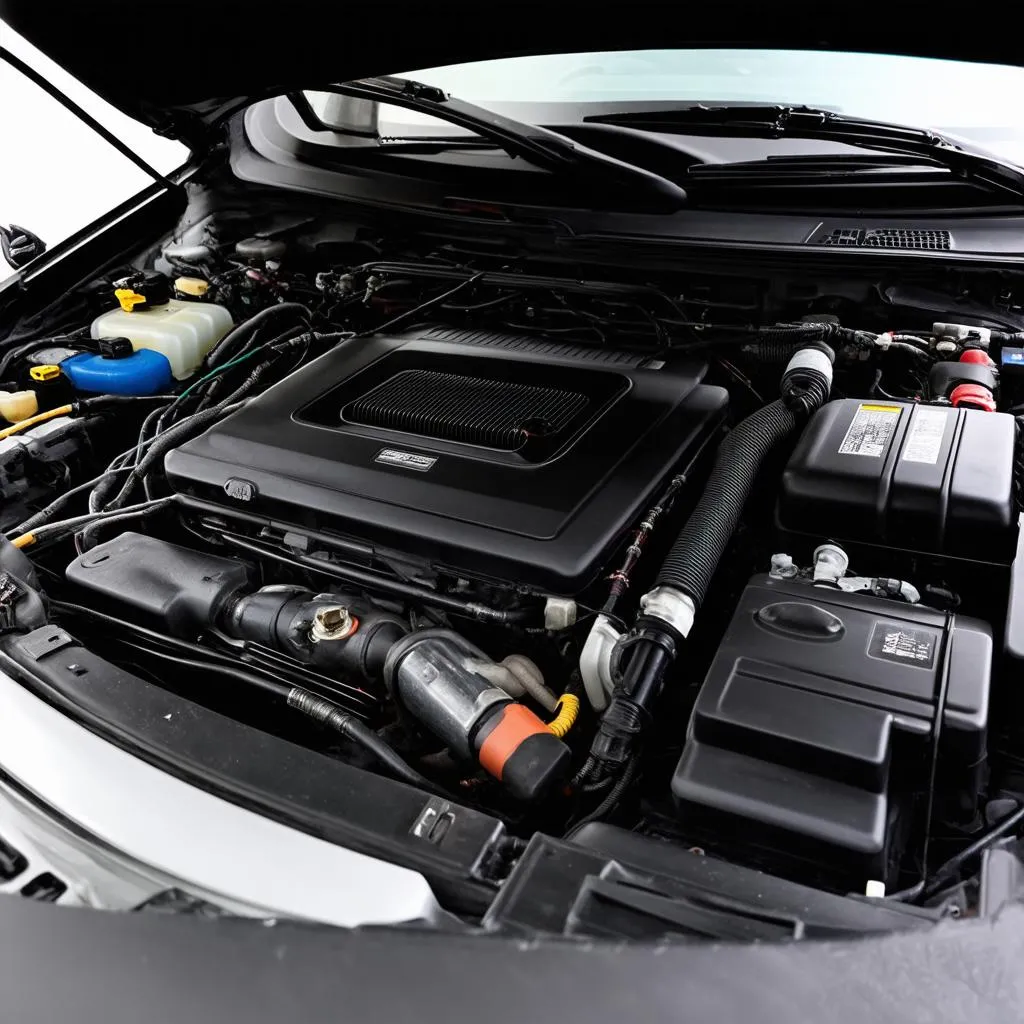Picture this: You’re cruising down the Pacific Coast Highway, California sunshine warming your face, the wind in your hair. Suddenly, that dreaded “Check Engine” light pops up on your 2008 Ford’s dashboard, instantly killing the vibe. You pull over, heart sinking. A quick check with your OBD-II scanner reveals the cryptic code: P0153. What does it mean? Is your road trip over before it even began?
Don’t panic! This is a common issue we see a lot at Tech Car USA, and in this article, we’ll break down everything you need to know about the P0153 code, empower you with knowledge, and get you back on the road in no time.
Understanding the P0153 Code: A Mechanic’s Perspective
The P0153 code specifically points to a problem with the oxygen sensor (O2 sensor) circuit. Think of the O2 sensor as the lungs of your engine. It constantly analyzes the exhaust gases to determine how much oxygen is left after combustion. This information is crucial for the engine control unit (ECU) to maintain the optimal air-fuel mixture for efficient performance and minimal emissions.
Now, the “slow response” part of the code means the O2 sensor is taking too long to send information to the ECU. This delay can wreak havoc on your engine’s performance and fuel economy.
Why Does it Matter?
“Ignoring an oxygen sensor problem is like driving with a blindfold on,” says James O’Reilly, a veteran mechanic and author of “Automotive Electronics Demystified.” Just as your eyes guide you on the road, the O2 sensor guides your engine to run smoothly. A faulty sensor can lead to:
- Decreased fuel economy: A rich air-fuel mixture means your engine is burning more fuel than necessary.
- Poor engine performance: Expect sluggish acceleration, rough idling, and even stalling.
- Increased emissions: A malfunctioning O2 sensor can cause your vehicle to fail emission tests.
- Damage to other components: Prolonged driving with a faulty sensor can damage your catalytic converter, a costly repair.
Decoding the P0153: Common Causes and Solutions
Several culprits can trigger the P0153 code in your 2008 Ford. Here are the usual suspects:
- Faulty O2 Sensor (Bank 2 Sensor 1): This is the most common culprit. The sensor might be worn out, contaminated, or just plain broken.
- Wiring Issues: Damaged, corroded, or loose wiring between the sensor and the ECU can disrupt the signal transmission.
- Exhaust Leaks: Leaks in the exhaust manifold or pipes before the O2 sensor can introduce outside air, confusing the sensor’s readings.
- Vacuum Leaks: Leaks in the engine’s vacuum system can also disrupt the air-fuel mixture, indirectly affecting the O2 sensor readings.
- Faulty ECU: While rare, a malfunctioning ECU can misinterpret the sensor’s signals, triggering the code.
Troubleshooting the P0153 Code
Before you rush to the mechanic, here are some things you can check yourself:
- Visually inspect the O2 sensor wiring: Look for any signs of damage, corrosion, or loose connections.
- Check for exhaust leaks: Listen for any hissing sounds coming from the exhaust system, especially near the engine.
- Use a multimeter to test the O2 sensor’s resistance and voltage output. (This requires some technical know-how.)
If you’re not comfortable getting your hands dirty, it’s best to take your Ford to a trusted mechanic specializing in European cars and equipped with dealer-level scanners for accurate diagnosis and repair.
 Engine Bay
Engine Bay
Frequently Asked Questions about the P0153 Code
Here are some questions we often hear from our customers:
Q: Can I still drive my car with the P0153 code?
A: While you can technically still drive your car, it’s not recommended. Driving with a faulty O2 sensor can lead to further damage and costly repairs down the line.
Q: How much does it cost to replace an O2 sensor?
A: The cost of replacing an O2 sensor varies depending on the make and model of your car and labor costs in your area. However, you can expect to pay anywhere between $200 to $400 for parts and labor.
Q: Can I replace the O2 sensor myself?
A: Replacing an O2 sensor is a relatively straightforward job for someone with basic mechanical skills. However, if you’re not comfortable working on your car, it’s best to leave it to the professionals.
Need Expert Help with Your 2008 Ford’s P0153 Code?
We understand that dealing with car troubles can be stressful. At Tech Car USA, our team of expert mechanics is here to help you get back on the road safely and efficiently.
Contact us on WhatsApp at +84767531508 for 24/7 support with your diagnostic tools and any car repair needs.
 Car Repair
Car Repair
Related Questions:
- What are the most common OBD-II codes for Ford vehicles?
- How to choose the right OBD-II scanner for my Ford?
- Can a bad battery cause the P0153 code?
For more helpful tips and advice on car maintenance and repair, browse our blog or contact our team today!